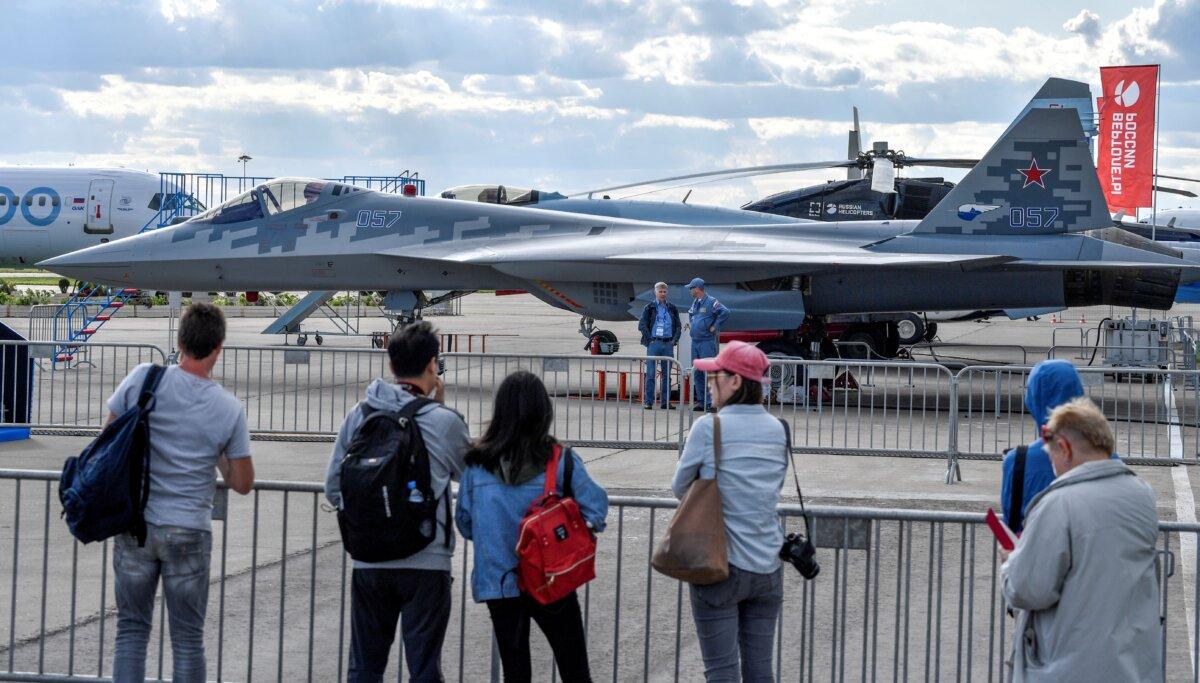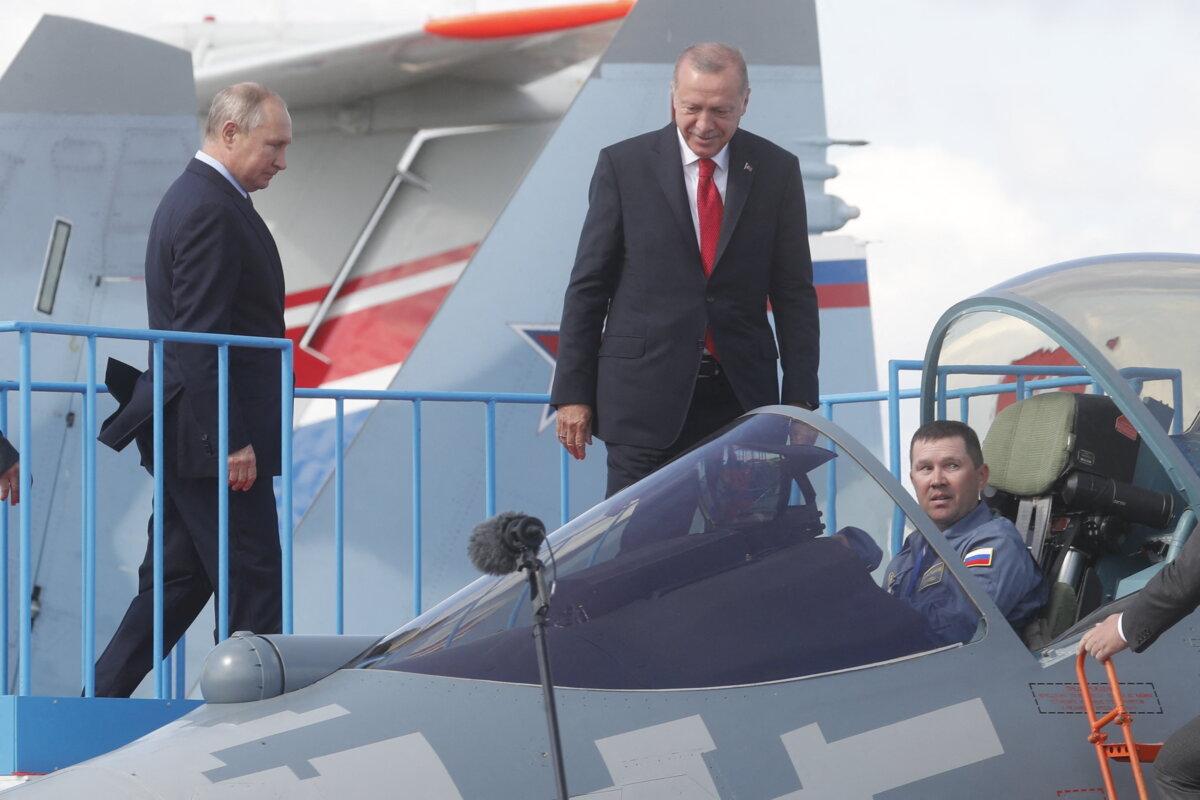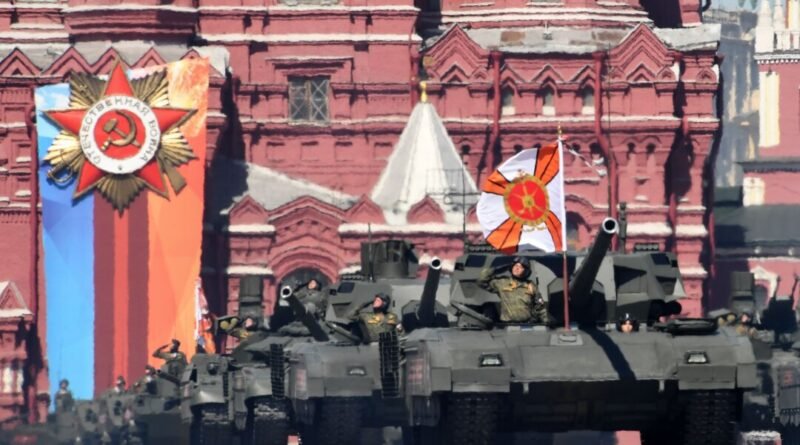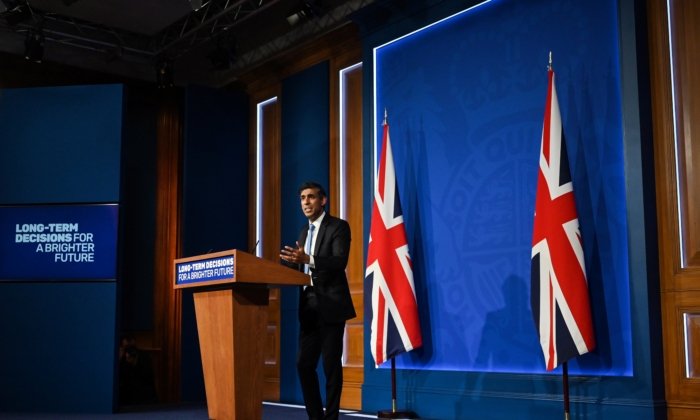Assessing the Effectiveness of Russia’s T-14 Armata Tank: A Valuable Investment or a Tactical Error?
The combat effectiveness of the T-14 and its contribution to modern warfare continue to be speculative.
News Analysis
Originally hailed as a groundbreaking advancement in Russian military technology, the T-14 Armata tank has not lived up to its expectations in the Ukraine conflict. Despite being lauded as a significant leap forward in armored warfare technology, the absence of the Armata from the battlefield has raised doubts about Russia’s readiness and the practical deployment of its most advanced military equipment.
On March 4, Sergey Chemezov, the CEO of Rostec, the state corporation responsible for Russia’s arms manufacturing, indicated that the deployment of the Armata tank in Ukraine is unlikely due to its high costs.
“The Armata is simply too costly,” Mr. Chemezov explained in a statement to a Russian news outlet, emphasizing that financial constraints have hindered the tank’s mass production and operational deployment, especially in the context of the ongoing conflict in Ukraine. This acknowledgment aligns with the broader issue of the tank’s limited production, as it has not exceeded 50 units, falling short of the ambitious target of 2,300, casting doubt on the feasibility of its widespread use.
Financial Hurdles of Deployment
The T-14 Armata boasts several innovative features, such as an unmanned turret and enhanced crew protection design. However, its actual combat effectiveness and contribution to modern warfare remain uncertain, with no confirmed deployment in Ukraine thus far.
The Russian government’s preference for the older but proven T-90 tank demonstrates a strategic shift towards cost-efficiency and reliability over the untested advantages of the Armata. This decision reflects the challenges faced by the Russian military in reconciling lofty aspirations with the practical constraints imposed by economic limitations and the realities of contemporary combat.
Further undermining the credibility of Russia’s assertions about the T-14 Armata’s superiority are comparisons made with the Sukhoi Su-57 fighter jet, another high-profile military project yet to demonstrate its operational capabilities in Ukraine.
The reluctance to risk these advanced assets indicates potential concerns within the Russian military hierarchy about the potential reputational damage that could arise from their loss or underperformance in the field. Western intelligence views this cautious approach as a sign of the Kremlin’s apprehension regarding the consequences of exposing its top military technologies to the challenges of actual combat.
British Intelligence Challenges Russian Claims
However, a British Ministry of Defence intelligence update from March 5 casts doubt on these plans, suggesting that the deployment of T-14 tanks to any combat unit is highly improbable. This assessment supports the speculation that concerns about the potential loss of these highly acclaimed tanks and the resulting reputational damage could discourage their use in Ukraine.
The limited number of T-14 tanks, though technologically advanced, cannot meet the extensive demands of battlefield engagements, necessitating reliance on other, more commonly produced tank models.
This British intelligence perspective sharply contrasts with persistent claims by Russian state media that the T-14 has been in action in Ukraine. Despite such assertions, the likelihood of the T-14’s involvement—whether in a limited capacity or through indirect engagement such as long-distance firing—remains questionable at best. Kyiv has echoed this skepticism, denying any indication of Armata tank engagement in combat, in agreement with the British analysis.

The situation of the T-14 Armata mirrors that of the Su-57 “Felon,” Russia’s acclaimed fifth-generation fighter jet. Delivered to the Russian Air Force in 2020, the Su-57 was also expected to have a significant impact on the conflict in Ukraine. However, like the T-14, the presence of the Su-57 in the theater of war has been minimal and clouded in uncertainty.

Skepticism on the Battlefield: Reality Behind the Hype
The UK Ministry of Defence’s 2023 analysis highlights strategic caution in Russia’s deployment decisions concerning the Su-57 in the Ukraine conflict. This caution arises from a desire to avoid losses that could damage its reputation, reduce export opportunities, and risk the exposure of sensitive technologies.
Moscow’s hesitance to deploy the Su-57 more extensively may indicate a lack of confidence in its stealth capabilities, amidst concerns not only about the potential capture of advanced technology by NATO but also about revealing the true capabilities of Russia’s most advanced fighter jet. This position reflects a broader skepticism about the operational effectiveness of Russia’s touted military assets, which often fall short of their hyped potential.
Similarly, the T-14 Armata tank, while marketed as the most advanced main battle tank globally, faces doubts about its combat effectiveness and reliability. British intelligence reports have indicated a lack of confidence in the T-14 among Russian military commanders in Ukraine, suggesting low expectations for its performance. Even Sergey Chemezov, head of Rostec, implied a preference for investing in more cost-effective tank options, underscoring a contrast between the Armata’s promotional hype and the Kremlin’s confidence in its battlefield usefulness.
Mr. Chemezov’s comments regarding the financial aspects of tank procurement further suggest that the high costs associated with the T-14 may serve as a convenient justification for its limited deployment. The absence of confirmed combat deployment in Ukraine, despite previous claims of participation, only adds to the doubts surrounding the tank’s capabilities.
Ambition Versus Reality in Modern Warfare
Introduced during the May 2015 Red Square parade, the T-14 Armata features an unmanned turret and places the crew in a protected capsule separate from the ammunition storage and automatic loader. Its design, aimed at reducing crew exposure to enemy fire, marks a significant evolution in tank technology. With features like a 125 mm smoothbore main gun, remote-controlled weapons, advanced sensors, and defense systems, the Armata has been praised in Russian media as a significant leap forward in armored warfare.
However, the gap between these technological advancements and the tank’s actual deployment underscores a critical disparity between Russia’s military ambitions and the practical challenges of modern warfare, highlighting a cautious approach to revealing the true state of its latest military innovations.
The story of the T-14 Armata tank encapsulates the divide between ambitious military innovation and the realistic challenges of warfare. Despite high expectations, the tank faced public embarrassment in 2015 during a Victory Day parade rehearsal.
A T-14 stalled on Red Square, not only questioning its capabilities but also raising concerns about its reliability. Officially explained as a demonstration of combat evacuation procedures, this incident clouded the Armata’s debut, with Uralvagonzavod officials quickly distancing the tank’s performance from the mishap, stating it was under military supervision during the rehearsal.
Beyond the Tank: Russia’s Military Capability in Question
The ongoing conflict in Ukraine has exposed the limitations and vulnerabilities of Russian military hardware. According to the Ukrainian Ministry of Defense, Russia has sustained heavy losses since the onset of the full-scale invasion in February 2022, with over 6,700 tanks reported as lost.
While these figures await independent verification, they align with Western assessments of significant Russian equipment losses, highlighting the broader challenges faced by Russia in maintaining its military campaign amid Western sanctions that have hindered Moscow’s ability to replace lost equipment and sustain a strong offensive stance.
This deterioration of Russian military capabilities offers tactical opportunities for Ukrainian forces. By strengthening defensive positions, disrupting supply lines, and strategically utilizing Western support, Ukraine can bolster its resilience against Russian advances. The expected increase in Western aid by 2024 could play a crucial role in shaping the conflict’s trajectory, providing Ukraine with the means to fortify its defenses and potentially alter the balance of power on the ground.
The narrative surrounding the T-14 Armata, from its troubled debut to its absence in significant conflicts, highlights a recurring theme in modern warfare: the contrast between technological aspirations and operational effectiveness. As the war in Ukraine unfolds, the fortunes of both nations will likely be influenced not only by the capabilities of their respective arsenals but also by their strategic adaptability and the support of the international community in their endeavors.






